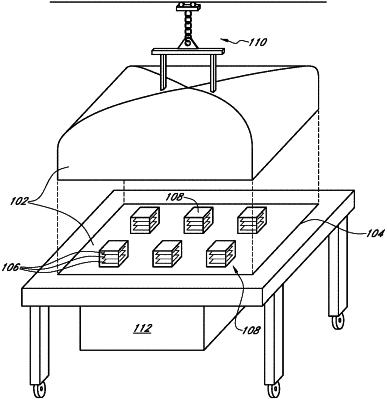| CPC H01J 9/12 (2013.01) [B23K 1/0008 (2013.01); G01T 1/202 (2013.01); H01J 37/244 (2013.01)] | 12 Claims |

|
7. A method for fabricating a plurality of microchannel plate photomultiplier tube (MCP-PMT) detectors using a system comprising:
a low-vacuum vessel comprising a housing and a seal, wherein the housing and the seal define an interior volume;
a low-vacuum pumping system comprising at least one pump connected to the low-vacuum vessel;
a plurality of detector modules contained within the low-vacuum vessel, each detector module comprising:
a window;
a base, wherein the window and the base define an internal volume of the detector module; and
a microchannel-plate photomultiplier tube detector disposed within the internal volume of the detector module;
one or more heaters in thermal communication with the detector modules;
an ultrahigh-vacuum manifold connected to the internal volumes of the detector modules; and
an ultrahigh-vacuum system comprising at least one pump connected to the ultrahigh-vacuum manifold,
the method comprising:
placing solder into a gap between the window and the base of the detector modules or adjacent to a gap between the window and the base of the detector modules;
evacuating the internal volume of the low-vacuum vessel to a low vacuum pressure in the range from 10−5 to 10−8 Torr;
evacuating the ultrahigh-vacuum manifold and the internal volumes of the detector modules to an ultrahigh vacuum pressure of 10−9 Torr or lower;
heating the detector modules to a temperature at which the solder melts to fill the gaps between the windows and the bases, while the low vacuum pressure is maintained in the internal volume of the low-vacuum vessel and the ultrahigh vacuum pressure is maintained in the internal volumes of the detector modules;
cooling the detector modules to a temperature at which the solder solidifies to form a solder seal between the windows and the bases, while the low vacuum pressure is maintained in the internal volume of the low-vacuum vessel and the ultrahigh vacuum pressure is maintained in the internal volumes of the detector modules; and
releasing the vacuum in the internal volume of the low-vacuum vessel.
|